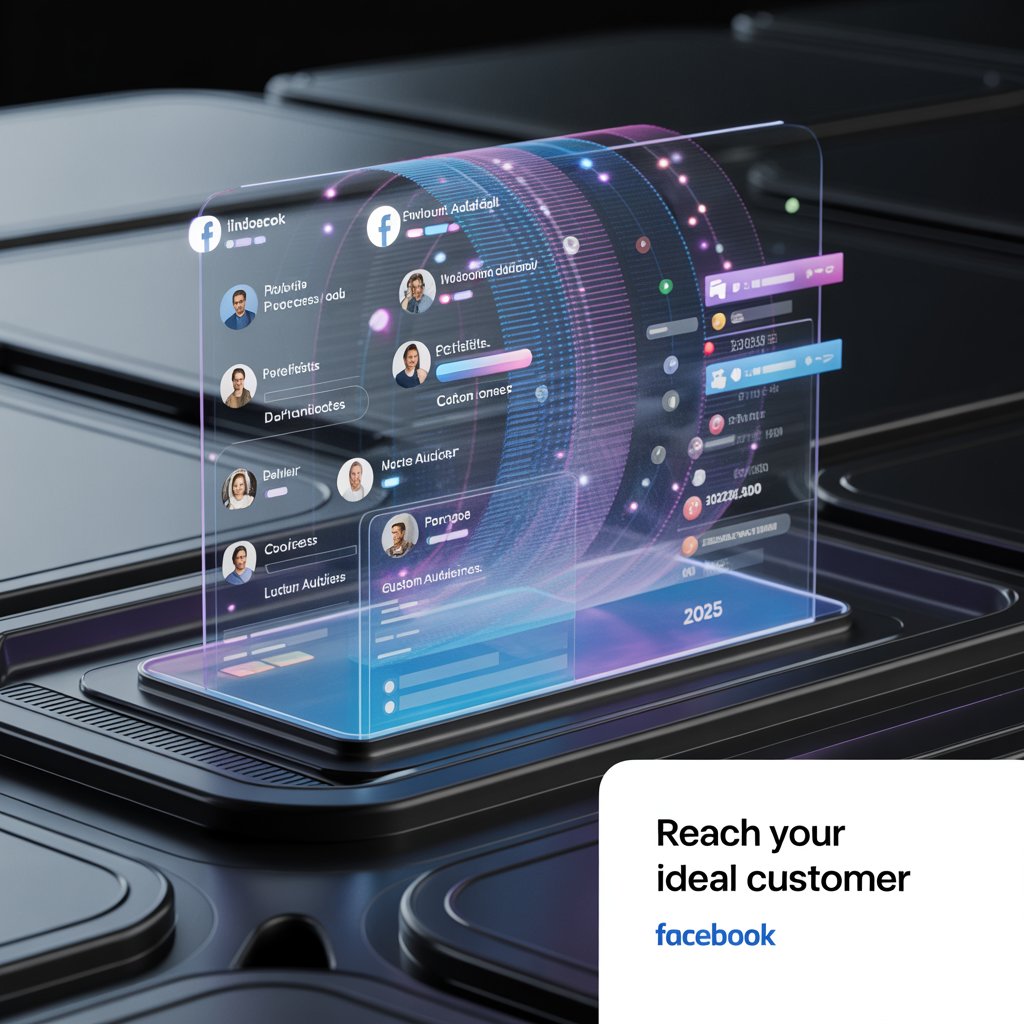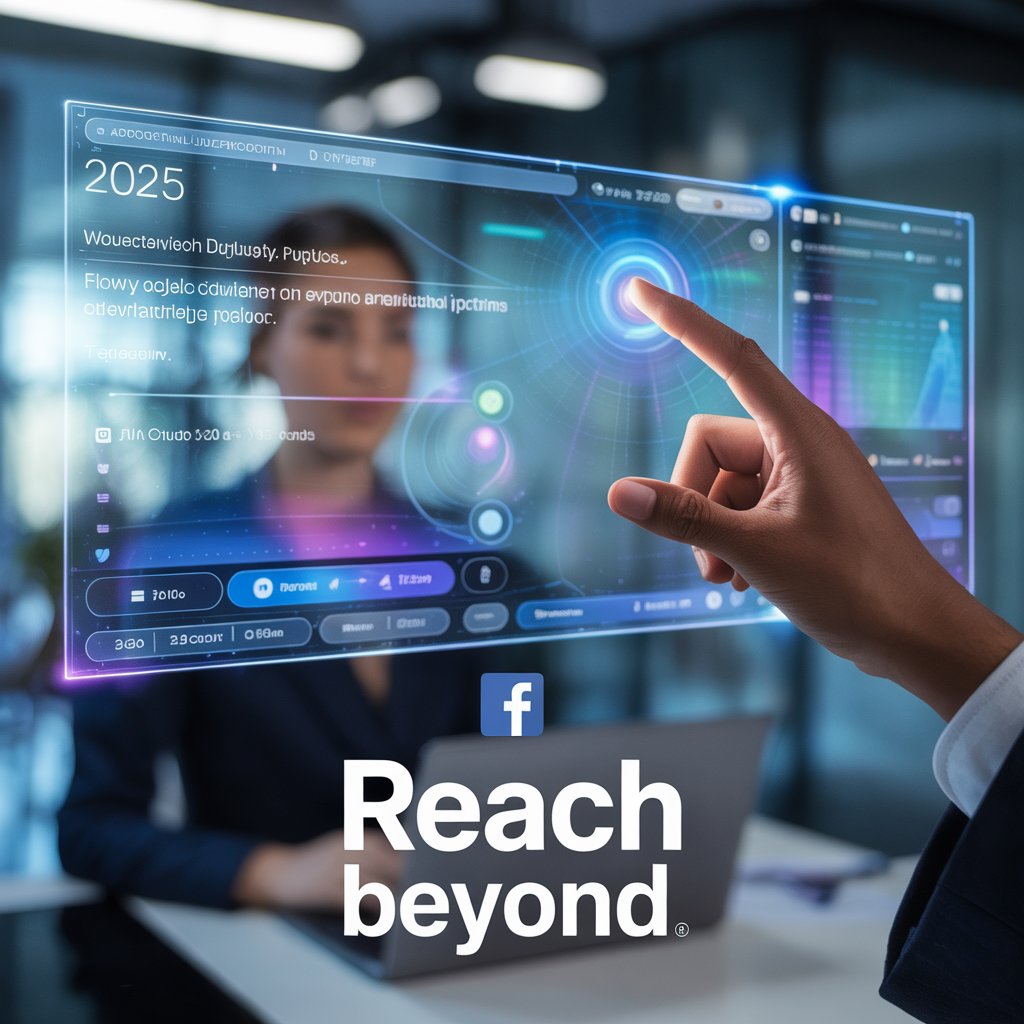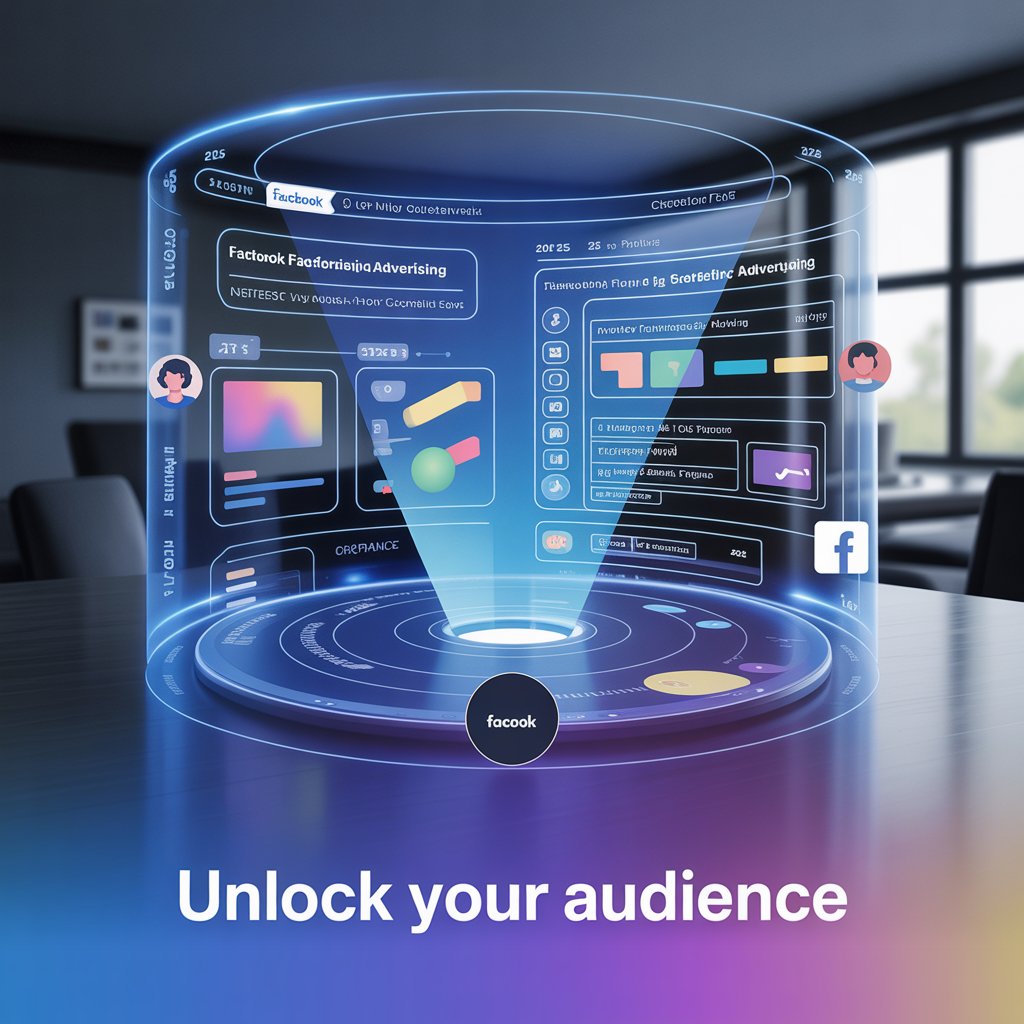Facebook advertising isn’t what it used to be—and that’s a good thing. As we enter 2025, marketers are stepping into a more intelligent, data-conscious, and AI-powered landscape. Whether you’re a small business owner or managing campaigns for a major brand, understanding Facebook Ad Targeting in 2025 is essential to staying ahead.
The Transformation of Facebook’s Advertising Platform in 2025
Over the years, Facebook has evolved from a basic social media ad network into a robust, machine-learning-powered advertising ecosystem. In 2025, the platform places a heavy emphasis on automation, privacy-first data strategies, and smarter targeting capabilities. Expect tighter integration with Meta’s broader AI tools, simplified audience creation, and a user-friendly backend designed to drive better results with less manual setup.
This transformation isn’t just about new features—it’s about a complete shift in how we think about connecting with audiences online.
The Pivotal Role of AI and Automation in Ad Targeting
AI isn’t just a buzzword in 2025—it’s the backbone of Facebook Ad Targeting. Meta’s Advantage+ tools now help advertisers reach high-intent users without needing to hand-pick dozens of targeting layers. Machine learning analyzes user behavior, content preferences, and platform activity in real time to optimize delivery.
What does this mean for you? Less guesswork, more performance. Facebook can now identify your most valuable audiences faster than ever before, even if you start with broad targeting.
Why Understanding Targeting Options Is Crucial for Campaign Success
Even though AI does much of the heavy lifting, smart marketers still need to understand all the targeting tools at their disposal. Why? Because when you know how each option works, you can:
- Make better budget decisions
- Optimize for different stages of your sales funnel
- Avoid ad fatigue by diversifying your audience sets
Facebook Ad Targeting in 2025 gives you the best of both worlds: powerful automation and customizable options. Knowing when to lean into AI and when to manually refine your targeting is key to creating a campaign that converts.
Core Targeting Options: Building the Foundation
Before diving into advanced strategies or relying entirely on AI, it’s important to understand the core targeting options that form the backbone of Facebook Ad Targeting in 2025. These foundational tools allow you to define who sees your ads based on real-world characteristics and behaviors—giving you control, precision, and relevance.
Demographics: Targeting by Age, Gender, Language, and Location
One of the simplest but most effective ways to narrow your audience is through demographic targeting. In 2025, Facebook’s ad platform allows you to segment users by:
- Age brackets (great for tailoring offers to specific generations)
- Gender (especially useful for industries like fashion, beauty, or healthcare)
- Language (perfect for multilingual regions or global brands)
- Location (from countries down to postal codes or radius-based targeting)
This is especially valuable for businesses with localized services or specific customer profiles. For example, a real estate agency in Toronto can easily reach 30–50-year-olds within a 10-mile radius who speak English or French.
Interests & Behaviors: Leveraging User Activities and Preferences
In 2025, Facebook’s ability to understand what people like and how they act online is more refined than ever. Interests are pulled from user profiles, activity, and engagement—while behaviors reflect actions like device usage, travel habits, and purchase history.
With Facebook Ad Targeting in 2025, you can now:
- Target users who are interested in sustainability, fitness, gaming, or finance
- Reach people based on shopping behavior, mobile device usage, or content consumption
- Layer multiple interests and behaviors to get hyper-specific (e.g., “Parents + Fitness Enthusiasts + Online Shoppers”)
This is ideal for eCommerce brands or content creators looking to connect with niche communities.

Life Events & Job Titles: Reaching Users During Key Moments
Facebook remains one of the few platforms where people openly share life milestones—graduations, engagements, moves, new jobs. In 2025, targeting around these life events is smarter and more predictive.
You can now:
- Serve wedding-related ads to users recently engaged
- Target relocation services to people who just moved
- Reach professionals by job title, industry, or employer for B2B campaigns
Whether you’re a florist, moving company, or SaaS provider, timing your message to life events boosts relevance and results.
Utilizing Facebook’s Detailed Targeting Section for Precision
While AI-driven campaigns are growing, Facebook’s Detailed Targeting section is still gold for advertisers who want control. This section lets you combine:
- Demographics + Interests + Behaviors
- Include/exclude audiences
- Narrow your audience for specific campaign goals
It’s especially useful when launching a new product, testing market segments, or running remarketing campaigns.
Facebook Ad Targeting in 2025 empowers you to get as granular or as broad as your strategy demands—giving you the flexibility to scale or niche down with confidence.
Custom Audiences: Reconnecting with Your Existing Network
While reaching new users is essential, some of your most valuable conversions come from people who already know your brand. Custom Audiences allow you to re-engage this warm audience—people who’ve visited your website, engaged with your content, or are already in your database. In the world of Facebook Ad Targeting in 2025, this feature is smarter, faster, and more effective than ever.
Website Visitors: Retargeting Users Who’ve Already Shown Interest
People who visit your website are already familiar with your brand. With the help of Meta Pixel or the Conversions API, you can build audiences based on how users interacted with specific pages.
This allows you to:
- Retarget people who viewed a product but didn’t buy
- Create reminder ads for users who added items to their cart
- Guide blog readers further down the sales funnel
In 2025, Facebook can dynamically personalize these ads to show users exactly what they browsed—maximizing your return on every click.
Customer Lists: Uploading Contact Information for Direct Targeting
If you have a database of leads or past customers, you can upload that list directly into Facebook. The platform will match the contact details to active user profiles and create a highly targeted Custom Audience.
This strategy is ideal for:
- Promoting new product launches to existing buyers
- Re-engaging cold leads with special offers
- Creating VIP or loyalty-based campaigns
In an age of privacy regulations, make sure your data is consent-based and secure. Clean, compliant lists make all the difference when applying Facebook Ad Targeting in 2025.
App Activity: Engaging Users Based on In-App Behavior
For businesses with a mobile app or web-based platform, Facebook allows you to create Custom Audiences based on user behavior inside the app. This includes actions like purchases, logins, feature usage, or account inactivity.
With these audiences, you can:
- Show upgrade ads to free-tier users
- Encourage return visits from dormant users
- Promote new features to your most active audience
By connecting app data with your ad strategy, you make your messaging more timely, relevant, and performance-driven.
Engagement: Reaching Social Media Users Who Already Interacted
Not every warm lead comes from your website or app. Many users engage with your brand directly on Facebook or Instagram. With Engagement Custom Audiences, you can target users who have:
- Watched your videos
- Liked, commented on, or shared your posts
- Messaged your business or clicked on a call-to-action
This group is already familiar with your voice and value, which often means lower ad costs and better click-through rates.
Lookalike Audiences: Expanding Reach to Similar Users
Finding new customers who share the same traits as your best existing clients is one of the smartest growth strategies available today. With Facebook Ad Targeting in 2025, Lookalike Audiences continue to be a powerful tool to expand your reach by tapping into fresh, highly relevant prospects.
Creating Audiences That Mirror Your Best Customers
Lookalike Audiences work by analyzing a source audience—such as your highest-value customers, newsletter subscribers, or website converters—and then finding new Facebook users who share similar characteristics. This allows you to extend your marketing efforts beyond your current network to people who are statistically more likely to be interested in your products or services.
The key is starting with a high-quality source audience, because the better the data, the more precise your Lookalike Audience will be.
Adjusting Similarity Percentages to Balance Reach and Precision
Facebook allows you to adjust the size of your Lookalike Audience based on similarity. At a lower percentage (e.g., 1%), Facebook finds users who are very closely matched to your source audience, which means high precision but smaller reach. Increasing the percentage expands the audience but introduces more variability, which can lower overall targeting accuracy.
In 2025, balancing this trade-off is crucial. For highly specific campaigns or niche products, a tighter Lookalike Audience can drive better results. For brand awareness or broader outreach, a larger audience might make more sense.
Best Practices for Effective Lookalike Audience Creation
To get the most out of Lookalike Audiences with Facebook Ad Targeting in 2025, consider these tips:
- Use your highest-quality customer lists or website converters as the source
- Combine Lookalike Audiences with other targeting layers, like interests or behaviors, to refine results
- Regularly update your source audiences to keep your lookalikes fresh and relevant
- Test different audience sizes and monitor campaign performance to find the sweet spot
Lookalike Audiences are a cornerstone of scaling Facebook ad campaigns, giving you the opportunity to reach new customers who resemble your best ones — making every ad dollar more effective.
Broad Targeting: Letting Facebook Find Your Audience
In the world of Facebook Ad Targeting in 2025, sometimes less really is more. Broad targeting is a strategy where advertisers provide minimal constraints, allowing Facebook’s powerful algorithms to find and deliver your ads to the people most likely to engage or convert.
The Strategy Behind Minimal Targeting Constraints
Rather than building complex audience segments with numerous filters, broad targeting takes a step back and trusts Facebook’s AI to do the heavy lifting. By removing tight restrictions around demographics, interests, or behaviors, you give the algorithm freedom to explore and identify hidden pockets of potential customers.
This approach works especially well when you have strong creatives or clear conversion goals, allowing Facebook to optimize delivery based on real-time performance data.
Benefits of Facebook’s Algorithmic Audience Discovery
Facebook’s advanced machine learning models analyze billions of data points every day. When using broad targeting, the system can:
- Discover new and unexpected audience segments
- Allocate budget efficiently toward high-performing users
- Adapt quickly to changes in audience behavior or market trends
This dynamic, data-driven discovery process often leads to better results at scale, especially for brand awareness and upper-funnel campaigns.
When to Consider Broad Targeting for Your Campaigns
Broad targeting isn’t a one-size-fits-all solution, but it’s worth considering in certain scenarios, such as:
- Launching new products or brands without clear audience data
- Running campaigns focused on reach or awareness rather than immediate conversions
- Combining with Advantage+ automated tools to maximize AI benefits
For marketers who want to leverage Facebook Ad Targeting in 2025 without spending hours on audience research, broad targeting offers a smart, efficient path to growth.
Retargeting Strategies: Re-Engaging Interested Users
In Facebook Ad Targeting in 2025, retargeting remains one of the most effective ways to turn interest into conversions. By reconnecting with users who have already interacted with your brand, you can guide them back to your site and gently push them toward a purchase or desired action.
Dynamic Ads: Showcasing Products Users Viewed But Didn’t Purchase
Dynamic ads take retargeting to the next level by automatically displaying the exact products or services a user viewed but didn’t buy. Instead of generic ads, these personalized ads serve relevant content based on user behavior—reminding potential customers what caught their attention and encouraging them to complete their purchase.
This kind of tailored approach boosts conversion rates by making your ads highly relevant and timely.
Sequential Messaging: Guiding Users Through the Sales Funnel with Tailored Messages
Not all retargeting ads should be the same. Sequential messaging involves showing a series of ads that change depending on where a user is in their buyer journey. For example, a first ad might educate or build awareness, the next might offer social proof or testimonials, and a final ad could include a limited-time discount.
With Facebook Ad Targeting in 2025, you can set up these automated sequences to nurture leads smoothly and increase the chances of conversion.

Custom Combinations: Creating Layered Retargeting Strategies for Maximum Impact
The most effective retargeting campaigns don’t rely on a single tactic—they combine multiple layers of targeting. For instance, you might retarget website visitors with dynamic ads, then exclude recent purchasers while running sequential messaging for users who abandoned carts.
Layering retargeting strategies like this helps avoid ad fatigue, keeps messaging fresh, and maximizes your advertising budget by focusing on the most promising prospects.
Navigating Privacy and Data Regulations
With Facebook Ad Targeting in 2025, privacy and data regulations play a bigger role than ever before. As laws like GDPR and other global privacy standards become stricter, advertisers must balance effective targeting with compliance and respect for user data.
Understanding the Impact of GDPR and Other Privacy Laws on Ad Targeting
Regulations like the General Data Protection Regulation (GDPR) in Europe, CCPA in California, and similar laws worldwide have reshaped how data can be collected, stored, and used for advertising. These laws give users more control over their personal information, meaning:
- Advertisers can’t use data without explicit consent
- Certain targeting options have become limited or require additional transparency
- Data processing and storage practices must meet legal standards
This has changed the landscape of Facebook Ad Targeting in 2025, making it essential to stay informed and adapt campaigns accordingly.
Strategies for Compliance While Maintaining Effective Targeting
While privacy laws can feel restrictive, they don’t have to limit your advertising success. Smart advertisers focus on:
- Using consent-based data collection methods, such as clear opt-ins
- Leveraging Facebook’s privacy-compliant tools like aggregated event measurement and Conversion API
- Prioritizing first-party data from your own audiences and customers
- Combining compliant Custom and Lookalike Audiences with broad or Advantage+ targeting
This approach helps maintain precise targeting while respecting user privacy—a win-win for advertisers and consumers alike.
The Importance of Transparent Data Practices
Trust is key in today’s privacy-conscious world. Being open about how you collect and use data builds credibility with your audience and reduces the risk of penalties or account issues.
Ensure your privacy policies are easy to find and understand, and always communicate transparently about data usage. In 2025, transparent data practices are not just a legal requirement but a vital part of successful Facebook Ad Targeting.

Measuring Success: Key Metrics to Monitor
When it comes to Facebook Ad Targeting in 2025, measuring your campaign’s performance is just as important as setting it up correctly. Tracking the right metrics helps you understand what’s working, what isn’t, and how to optimize for better results.
Click-Through Rate (CTR): Assessing Ad Engagement
CTR measures the percentage of people who see your ad and actually click on it. A strong CTR indicates that your creative and messaging are resonating with your target audience. Monitoring CTR helps you identify which ads grab attention and encourage interaction—a crucial step for driving traffic to your website or landing page.
Conversion Rate: Evaluating the Effectiveness of Your Landing Pages
Clicks are great, but conversions are the real goal. Conversion rate shows the percentage of visitors who complete a desired action, such as making a purchase or signing up for a newsletter. This metric reveals how well your landing pages, offers, and overall user experience are driving results beyond just the initial click.
Return on Ad Spend (ROAS): Determining the Profitability of Your Campaigns
ROAS calculates how much revenue you earn for every dollar spent on advertising. It’s one of the most important metrics for evaluating campaign profitability. A high ROAS means your Facebook Ad Targeting in 2025 efforts are generating positive returns, while a low ROAS signals it’s time to rethink your strategy.
Frequency: Ensuring Your Audience Isn’t Experiencing Ad Fatigue
Frequency measures how often the same user sees your ad. While some repetition is necessary to build awareness and encourage action, too much can lead to ad fatigue, where users start ignoring or even getting annoyed by your ads. Keeping an eye on frequency helps you adjust your creative or targeting to keep your audience engaged and avoid wasted spend.
By consistently monitoring these key metrics, you can make data-driven decisions that boost the effectiveness of your Facebook Ad Targeting in 2025 campaigns and maximize your marketing ROI.
Conclusion: Crafting a Future-Ready Facebook Advertising Strategy
Navigating Facebook Ad Targeting in 2025 means staying ahead of a rapidly evolving landscape. With Meta constantly updating its tools and algorithms, the key to success is staying informed and adaptable.
The Importance of Staying Updated with Platform Changes
Facebook’s advertising platform is never static. New features, privacy regulations, and AI advancements continually reshape how you can reach your audience. Staying updated ensures you’re not left behind and can take full advantage of cutting-edge targeting options.

Embracing a Test-and-Learn Approach for Continuous Improvement
No campaign is perfect from the start. The most successful advertisers adopt a test-and-learn mindset—experimenting with different audiences, creatives, and strategies to see what works best. By analyzing performance data and iterating regularly, you unlock steady growth and improved ROI.
Leveraging the Full Spectrum of Targeting Options for Campaign Success
From detailed demographics and Custom Audiences to AI-powered Advantage+ and broad targeting, Facebook offers a diverse toolbox for advertisers in 2025. Combining these options thoughtfully enables you to reach the right people at the right time with the right message—driving better results and staying competitive.
By embracing these principles, your Facebook Ad Targeting in 2025 strategy will be future-ready, resilient, and primed for success in an ever-changing digital world.

